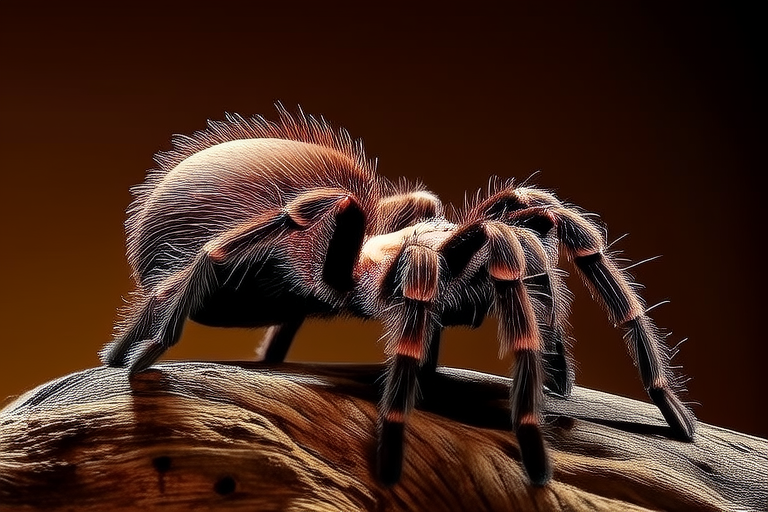8 Myths About Tarantulas Debunked
Tarantulas, the largest members of the spider family, are fascinating creatures that have captured human imagination for centuries. These arachnids belong to the family Theraphosidae, which comprises over 900 different species. Found in diverse habitats ranging from deserts to rainforests across the globe, tarantulas exhibit remarkable adaptability and resilience. Despite their fearsome reputation, many people are unaware of the true nature and behavior of these spiders. This article aims to dispel eight common myths surrounding tarantulas, offering insights into their biology, behavior, and ecological role.
Myth 1: All Tarantulas Are Highly Venomous
Fact: While tarantulas can deliver a painful bite, their venom is generally no more potent than a bee sting. Most species use their fangs primarily for subduing prey rather than defense against humans. A study published in the Journal of Arachnology found that only a few tarantula species possess venom strong enough to cause significant harm to humans. For instance, the Brazilian wandering spider (Phoneutria nigriventer) is known for its potent neurotoxin, but this is an exception among tarantulas. In contrast, many tarantulas rely on their formidable size and defensive behaviors like leg waving or releasing urticating hairs to deter potential threats.
Myth 2: Tarantulas Always Spin Webs
Fact: Unlike many other spiders, tarantulas do not typically construct webs to catch prey. Instead, they hunt actively, using their excellent senses and powerful legs to ambush or chase down insects, small vertebrates, and even other spiders. Some species dig burrows and wait at the entrance to pounce on passing prey. The web-building behavior is more characteristic of orb weavers and related species. However, tarantulas may occasionally produce silk for lining their burrows or wrapping eggs, demonstrating the versatility of spider silk beyond web construction.
Myth 3: Tarantulas Hunt Mammals
Fact: Although some urban legends depict tarantulas as dangerous predators of small mammals, including cats and dogs, this is largely exaggerated. Tarantulas are opportunistic hunters, feeding mainly on insects, small lizards, and other invertebrates. Their jaws and venom are not adapted for taking down larger animals. There are rare instances where tarantulas have been observed preying on small vertebrates, but these are exceptions rather than the norm. Scientific observations show that tarantulas prefer smaller, easier-to-catch prey, minimizing the risk of injury to themselves.
Myth 4: Tarantulas Are Aggressive
Fact: Tarantulas are generally shy and reclusive creatures that avoid confrontation. They are solitary animals that spend most of their time resting in burrows or hidden locations. When threatened, their first response is usually to flee or display intimidating behaviors such as leg waving or bristling their hairs. Only when cornered or provoked will a tarantula consider biting as a last resort. Studies have shown that tarantulas are much more likely to retreat than attack, making them less aggressive than many other animals commonly encountered outdoors.
Myth 5: Tarantulas Are Blind
Fact: Tarantulas possess keen senses that allow them to navigate and find food efficiently. While they lack the compound eyes of some other spiders, their vision is sufficient for detecting movement and identifying prey or threats. Additionally, tarantulas have highly sensitive hairs covering their bodies, which can detect vibrations and air movements. These sensory structures, combined with their ability to sense chemicals in the environment, make tarantulas well-adapted to their surroundings despite not having excellent eyesight. Research indicates that tarantulas use a combination of visual cues, chemical signals, and tactile feedback to interact with their environment.
Myth 6: Tarantulas Are Dangerous to Handle
Fact: Handling tarantulas requires caution but can be done safely if proper techniques are followed. Many species are docile and tolerate gentle handling. However, it is crucial to respect the spider’s space and avoid sudden movements that might startle it. Some tarantulas, especially those with urticating hairs, can release these hairs as a defense mechanism, causing irritation to the skin or eyes. Always wash your hands after handling a tarantula to prevent any potential allergic reactions. Responsible handling practices can help foster a better understanding and appreciation of these creatures without risking harm to either party.
Myth 7: Tarantulas Are Extinct in Many Areas
Fact: Contrary to popular belief, tarantulas are not endangered in most parts of the world. Many species thrive in their natural habitats, although habitat destruction and collection for the pet trade pose threats to certain populations. Conservation efforts and awareness campaigns are helping to protect vulnerable tarantula species. For example, the Gooty sapphire ornamental tarantula (Poecilotheria metallica), once thought to be extinct, was rediscovered in India and is now the focus of conservation programs. Efforts to preserve natural habitats and regulate the pet trade can ensure the survival of tarantulas for future generations.
Myth 8: Tarantulas Are Useless to Humans
Fact: Tarantulas play vital roles in ecosystems and offer benefits to humans. As predators, they control insect populations, contributing to balanced ecosystems. Some species also serve as important subjects in scientific research, particularly in fields such as biochemistry and medicine. Additionally, the silk produced by tarantulas has unique properties that researchers are exploring for potential applications in materials science. Furthermore, tarantulas have cultural significance and economic value through the pet trade and tourism. By appreciating the ecological and practical contributions of tarantulas, we can better understand and support their conservation.
Conclusion
Tarantulas are remarkable creatures with diverse adaptations and behaviors that challenge common misconceptions. From their venom potency to their hunting habits, these spiders often face misunderstandings that overshadow their true nature. By debunking eight prevalent myths about tarantulas, this article aims to promote a more accurate and positive perception of these misunderstood arachnids. Tarantulas are integral components of various ecosystems, playing key roles in maintaining biodiversity. Encouraging a respectful and informed approach towards tarantulas can lead to greater appreciation for these fascinating creatures and their contributions to our natural world.
